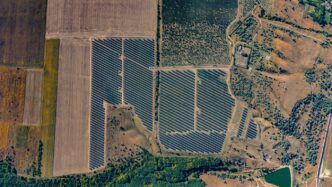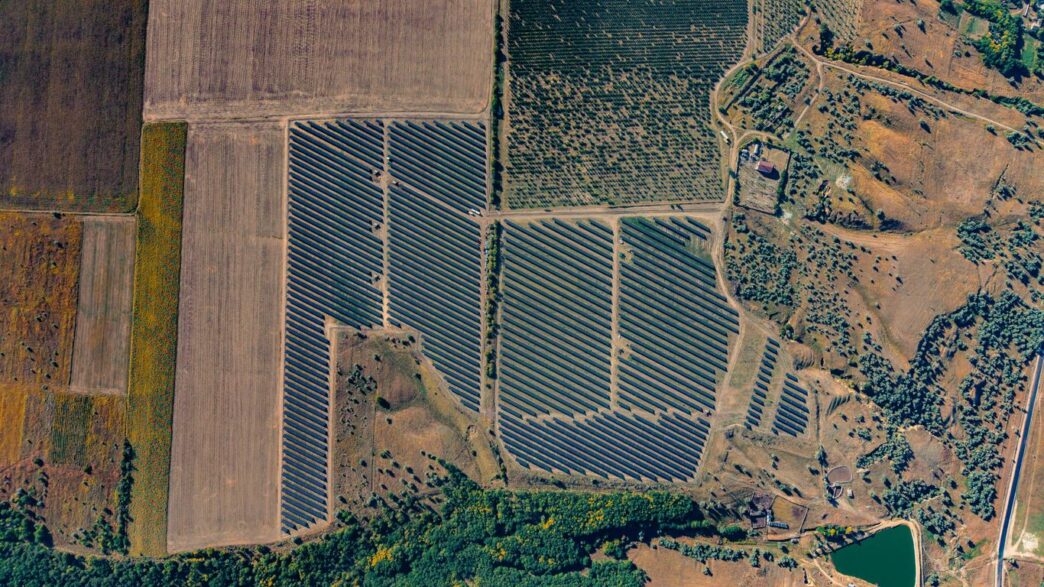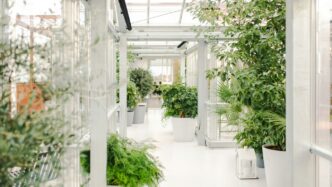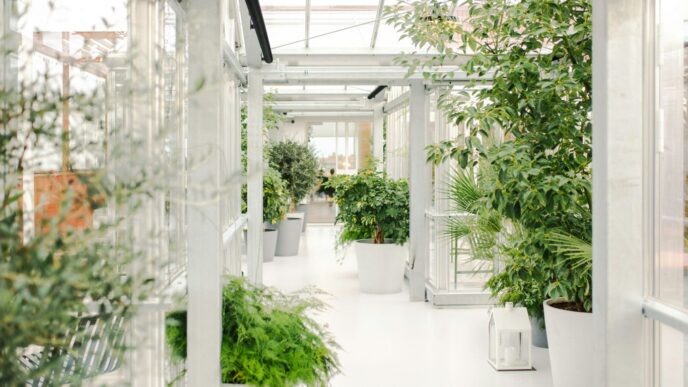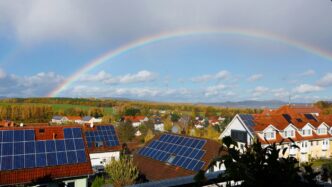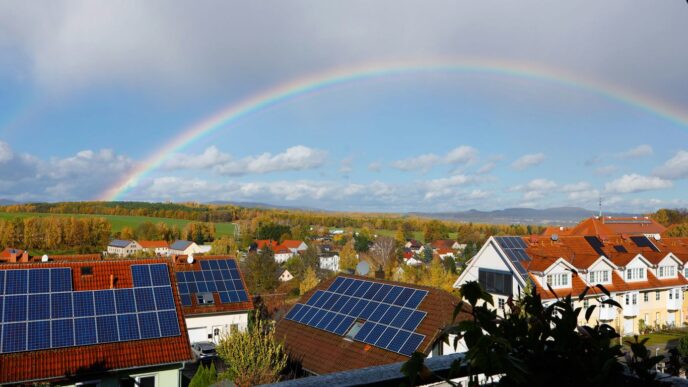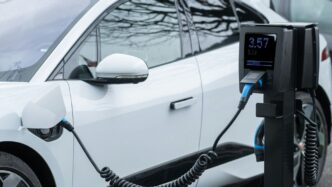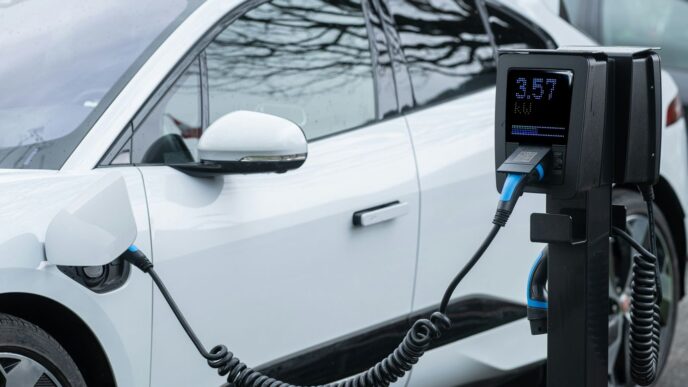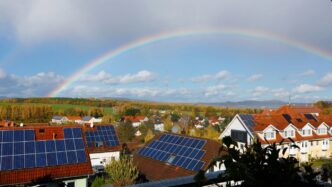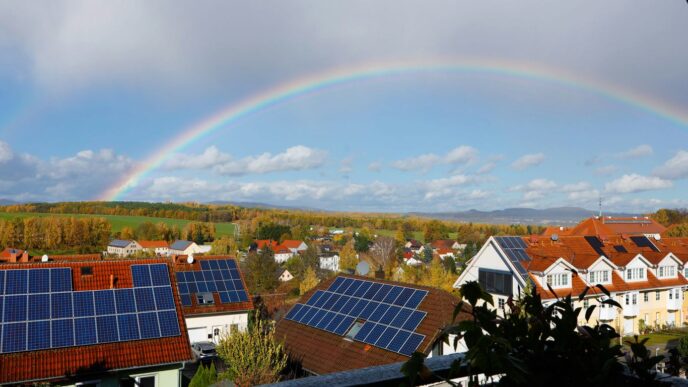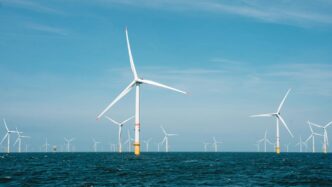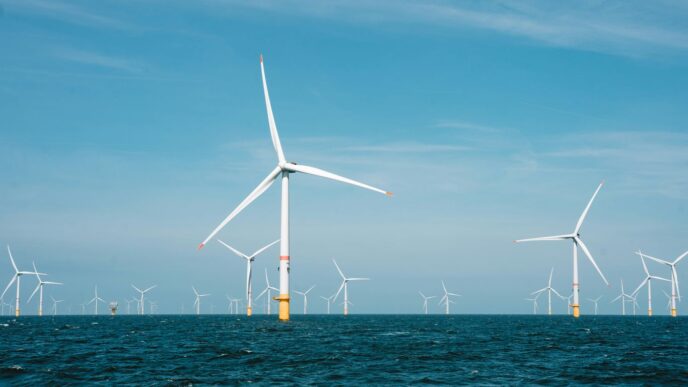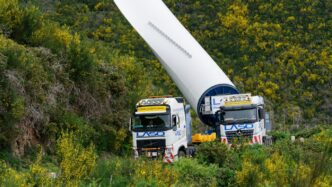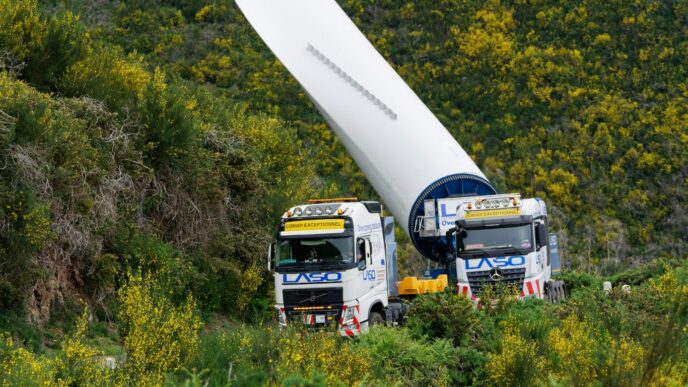Farming in Virginia has always been a big part of our state’s identity. But things are changing, and farmers are looking for new ways to make a living. One of the newer options popping up is the virginia solar farms. These aren’t just about electricity; they’re starting to change how we think about using our land and supporting our rural towns. Let’s take a look at how this is all shaking out.
Key Takeaways
- Virginia solar farms offer farmers a steady income through land leases, helping to offset the unpredictable nature of agriculture.
- The Virginia Clean Economy Act pushes the state toward 100% clean energy by 2045, making solar projects a key part of the energy plan.
- These solar projects can bring more money into local communities through taxes, which helps pay for things like schools and roads.
- Concerns about land use and environmental impact are being addressed through careful planning and community input.
- Future farming in Virginia might involve mixing crops with solar panels, known as agrivoltaics, to create multiple income streams.
Virginia Solar Farms: A Boon for Agriculture

Farming in Virginia has always been a tough gig, right? Generations have worked the land, but lately, things are getting harder. Costs for equipment, seeds, and labor keep climbing, and sometimes the weather just doesn’t cooperate. Plus, with more people moving into rural areas, farmland can feel like it’s under pressure. It’s a lot for any farmer to handle.
But what if there was a way to add a steady income stream without giving up the farm entirely? That’s where solar farms come in. Think of it as a new kind of crop, one that doesn’t need plowing or watering. Farmers can lease a portion of their land to solar companies, and in return, they get regular payments. This can make a huge difference in keeping family farms afloat and preserving that agricultural heritage we all value. It’s not about replacing farming; it’s about finding smart ways to make it work for the long haul.
Empowering Farmers with Stable Income Streams
One of the biggest wins for farmers is the financial predictability solar leases offer. Unlike growing corn or soybeans, where prices can swing wildly from year to year, a solar lease is typically a long-term contract. This means farmers know exactly how much income they can expect, year after year. This stability helps with planning, paying bills, and even investing back into the farm. It’s a safety net that can ease a lot of worry.
Here’s a quick look at how it stacks up:
- Traditional Farming: Income can be unpredictable, heavily influenced by market prices, weather, and pests.
- Solar Lease: Provides a fixed, reliable payment over the contract term, often 20-25 years.
- Operational Needs: Farming requires constant input and labor; solar farms need minimal upkeep.
Preserving Agricultural Land for Future Generations
There’s a common worry that putting up solar panels means losing farmland forever. But that’s usually not the case. Solar farms are temporary. When the lease is up, the panels can be removed, and the land can go back to being used for farming. This is a big deal for keeping land in the family and available for future farmers. It’s like giving the land a break, letting it rest and recover, rather than seeing it turned into housing developments or strip malls. This temporary use can actually help preserve the agricultural character of our rural areas.
The Economic Advantages of Solar Integration
Beyond the direct income for farmers, solar projects bring money into the local community. These projects pay taxes, which can mean more funding for local schools, roads, and other public services. For rural counties, this tax revenue can be a significant boost, helping to support the services everyone relies on. It’s a way for farms to contribute to the local economy in a new, impactful way, all while producing clean energy.
The Virginia Clean Economy Act and Solar Expansion
Driving Towards 100% Clean Energy by 2045
Virginia has set a pretty big goal: to get all its energy from clean sources by the year 2045. This isn’t just a nice idea; it’s a law, thanks to the Virginia Clean Economy Act. It’s a major shift, and solar power is a huge part of making it happen. Think about it – we’re talking about transforming how the whole state gets its electricity. This act is basically the roadmap, and solar farms are one of the main vehicles taking us there. It means a lot more solar panels popping up, not just on rooftops, but on larger plots of land too.
Incentives for Renewable Energy Projects
To actually get all these solar farms built, the state is offering some help. There are incentives, which are basically rewards, for companies and landowners who invest in renewable energy. These can come in different forms, like tax breaks or special programs that make it easier to get projects approved. For farmers, this often means they can lease their land for solar development and get a steady income, which is a big deal when farming can be so unpredictable. It’s a way to encourage more solar development without putting all the financial burden on the developers or landowners.
The Role of Solar in Virginia’s Energy Future
So, where does solar fit into the bigger picture of Virginia’s energy? It’s becoming a really important piece of the puzzle. With the state’s energy needs growing, especially with new industries moving in, we need reliable and clean power. Solar farms can provide a significant chunk of that. They help reduce our reliance on fossil fuels, which is good for the environment, and they can also create local jobs and bring in tax money. It’s not the only answer, but it’s definitely a major player in building a more sustainable and secure energy system for Virginia.
Here’s a quick look at how solar is growing:
- Virginia’s Solar Ranking: In 2023, Virginia was the 9th largest producer of solar energy in the U.S.
- Current Contribution: Around 13% of Virginia’s total power comes from solar plants as of 2024.
- Future Growth: Many more large-scale solar facilities are planned and expected to come online in the next decade.
This growth is key to meeting the state’s clean energy targets and managing increasing power demands.
Community Benefits of Virginia Solar Farms
Solar farms aren’t just about clean energy; they bring some real advantages right to our local towns and counties. Think about the money these projects can bring in. Local governments often get a nice chunk of change through property taxes from solar installations. This isn’t chump change either. It can mean more funding for things we all rely on.
Here’s a look at where that money can go:
- Schools: Better resources, updated facilities, or even hiring more teachers.
- Roads: Fixing potholes, improving bridges, and making our commutes smoother.
- Emergency Services: Supporting our firefighters, police, and ambulance crews with better equipment and training.
- Other Public Services: Parks, libraries, and community programs can all get a boost.
This influx of tax revenue can be a game-changer for rural areas, helping to keep essential services running strong. Beyond taxes, the construction and maintenance of these solar sites also create jobs, providing work for local folks. It’s a way to support our communities while also moving towards a cleaner energy future for Virginia.
Addressing Concerns in Solar Development
Look, building big solar farms on farmland isn’t always a slam dunk. People have questions, and that’s totally fair. We’re talking about changing the look of the countryside, and nobody wants to feel like their concerns are being brushed aside. It’s important to talk about these things openly so everyone understands what’s really going on.
One big worry is that these solar farms will just sit there forever, messing up the land. But the truth is, most solar installations are temporary. They can be taken down, and the land can go back to being used for farming later on. It’s not like paving over paradise permanently. Plus, sometimes these projects can actually help preserve farmland by stopping it from being developed for other things, like housing or commercial use, which are usually permanent changes.
Then there’s the idea that solar farms will hurt property values. Honestly, studies haven’t really shown that to be a big problem. The impact on nearby home prices seems to be pretty small, if it’s there at all. It’s not like putting up a giant, ugly billboard next door.
And what about wildlife? Some folks worry that solar farms will be bad for animals and bugs. But when they’re planned right, solar farms can actually create good spots for things like pollinators. Think of it as a little habitat boost in unexpected places. It’s all about how they’re designed and managed.
Here are some common points people bring up:
- Land Use: Will the land still be usable for farming? Yes, with approaches like agrivoltaics, where panels and crops or livestock share the space.
- Environmental Impact: What happens to the soil and local ecosystems? Careful planning can minimize disruption and even create new habitats.
- Community Input: Are local voices being heard? Open dialogue and siting agreements are key to making sure communities have a say.
Ultimately, responsible development means finding a balance that respects the land and the people who live there. It’s about making sure these projects work with the community, not against it.
The Future of Farming in Virginia
Integrating Technology and Sustainability
Farming in Virginia is changing, and it’s not just about the weather anymore. We’re seeing a big shift towards using new tech and being more mindful about how we treat the land. Think about it – farms are starting to look a lot different than they did even ten years ago. It’s about working smarter, not just harder. This move towards sustainability and tech isn’t just a trend; it’s becoming the new normal for keeping farms running and profitable.
Agrivoltaics: A Dual-Use Approach
One of the really interesting ideas popping up is called agrivoltaics. Basically, it means using the same piece of land for both growing crops and generating solar power. It sounds a bit wild, but it’s actually pretty clever. You can set up solar panels high enough so that tractors can still get underneath, or plant crops that actually do better with a bit of shade. It’s a way to get two incomes from one spot.
Here’s a quick look at how it works:
- Solar Panels: Placed strategically to allow farming activities below or between them.
- Crops: Certain vegetables, berries, or even grazing animals can thrive in the partial shade.
- Water Management: The panels can sometimes help collect rainwater, which can be used for irrigation.
Diversified Income Streams for Farmers
Farming has always been a bit of a gamble, with prices going up and down and weather being unpredictable. Adding solar farms, or even just using agrivoltaics, gives farmers more ways to make money. It’s like not putting all your eggs in one basket. Besides selling crops, farmers can now earn money from leasing land for solar panels or selling the electricity they generate. There’s even talk about getting paid for things like storing carbon in the soil. This kind of diversification makes farms more stable and helps them stick around for the next generation.
Looking Ahead: A Brighter Future for Virginia
So, what does all this mean for Virginia? It looks like solar farms are becoming a pretty big deal, and not just for making electricity. They’re offering farmers a way to make steady money, which is a big help with all the rising costs. Plus, these projects can bring in needed cash for local towns, helping schools and roads. The state’s pushing for clean energy, and solar fits right into that plan. While there are things to figure out, like making sure the land is used wisely, it seems like a good way to help our farms keep going and our communities stay strong. It’s about finding a balance, really, and making sure Virginia can power itself cleanly while keeping its agricultural roots.

